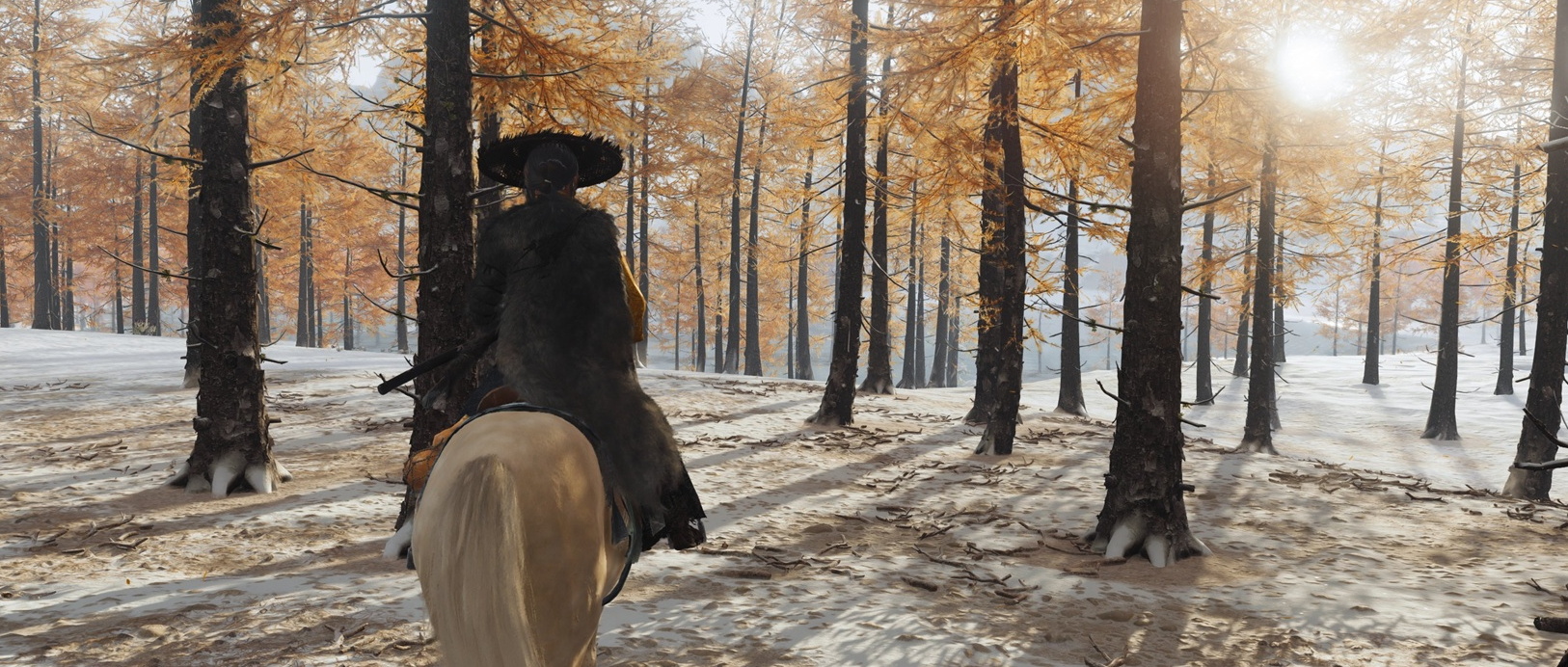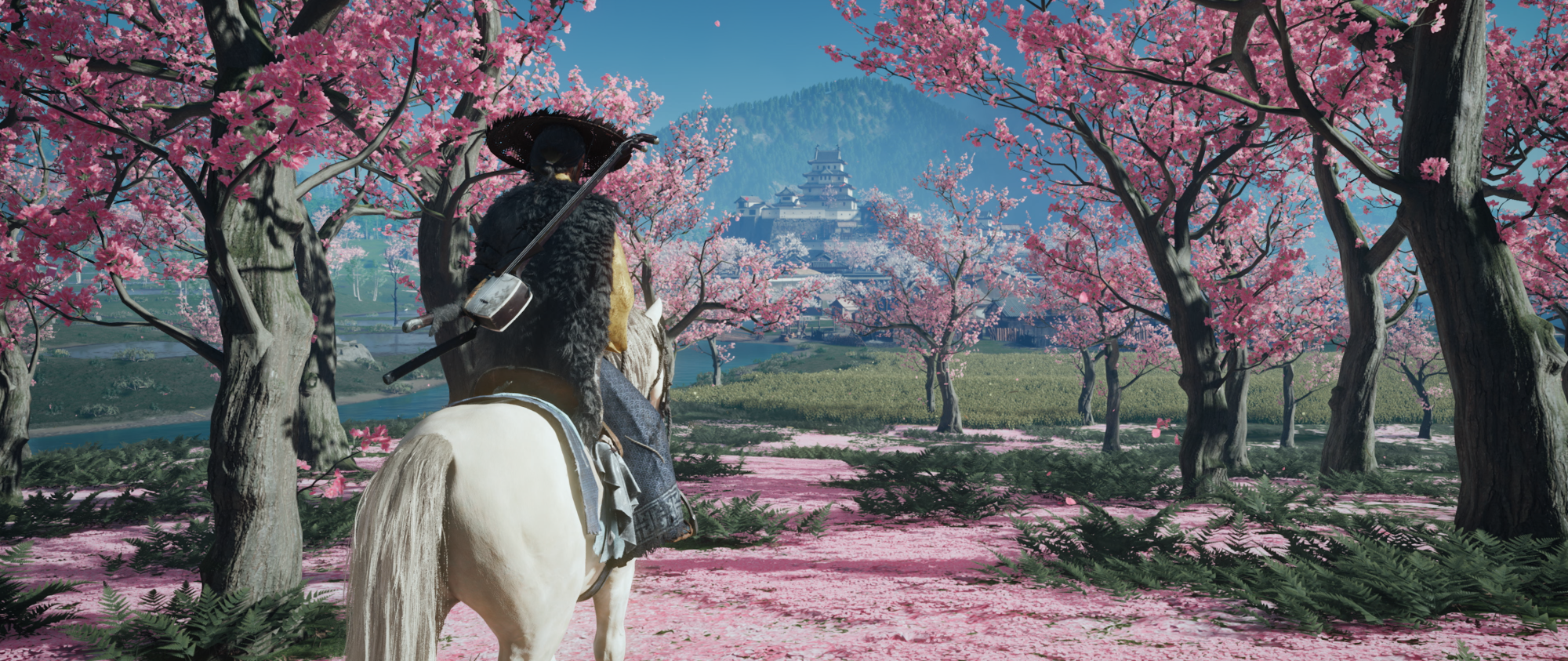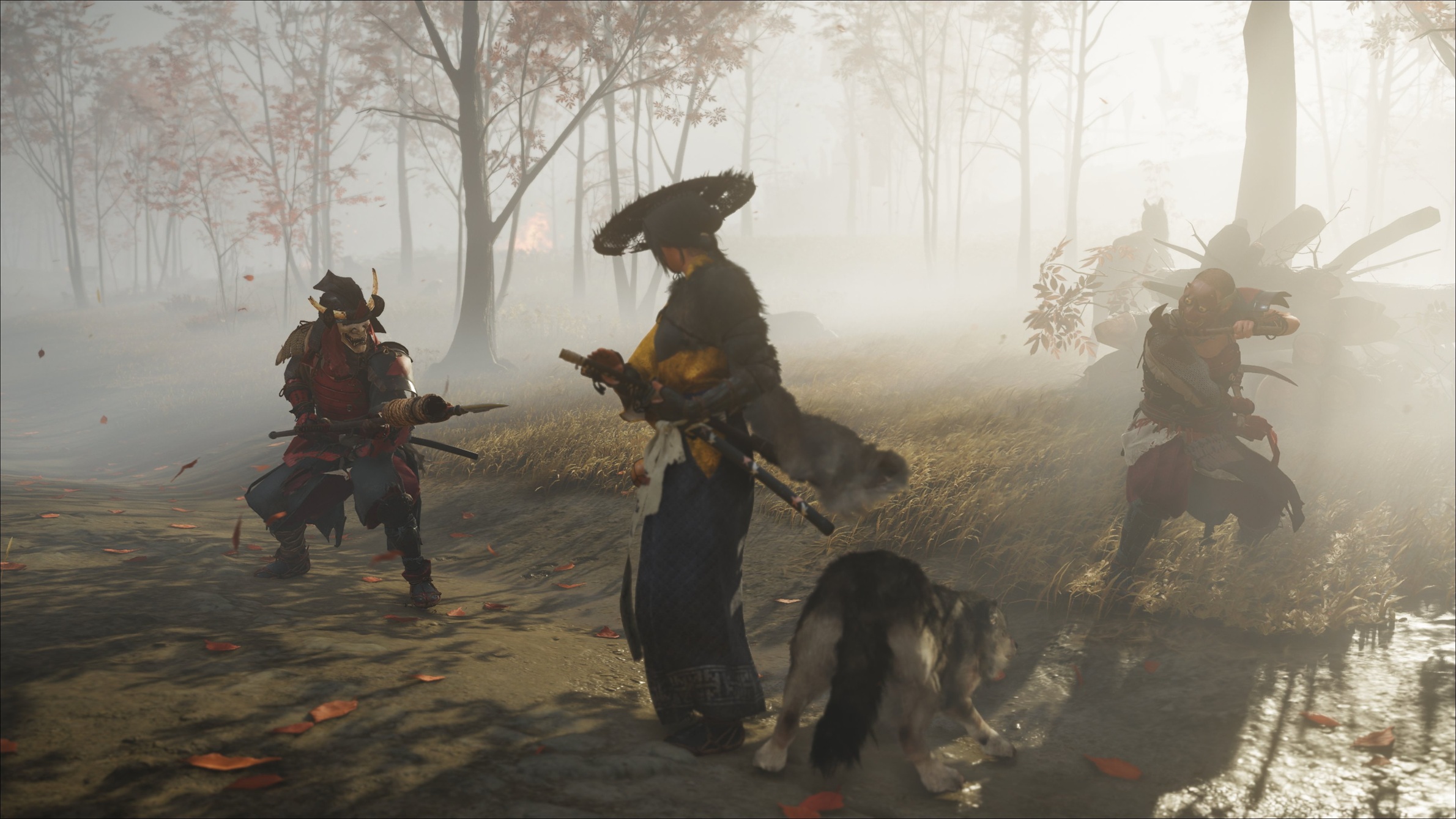
From: Sucker Punch
For: PS5
★★★★+
REVIEWED BY BEN ALLAN
It’s probably fair to say that 2020’s Ghost of Tsushima snuck up on the gaming world a little bit with just how darned good it was.
So, while Jin might have occasionally slipped through a gap in a stockade and crept around disposing of guards on the quiet, there’s no hope of sneaking in for Ghost of Yotei. The sequel arrives to red-hot anticipation and as one of the year’s biggest releases, with a lot to live up to. So how does it do?

Yotei jumps forward a few hundred years and northeast about 1000km to the northern island of Hokkaido (then called Ezo) in the 1600s. Some of the defeated enemies of the recently appointed shogun on the mainland have fled north into the areas around Ezo’s Mount Yotei to rebuild. As they import the conflicts of the south to more peaceful northern island, it’s bad news for the locals in general, but especially for our protagonist Atsu, who we meet as a young girl in the middle of having the sort of bad day that’s been experienced by hundreds of samurai, western and kung-fu flick heroes (and Luke Skywalker). Nice nuclear-family-living-in-rural-idyll you got here, kid; would be a shame if something happened to it. Alas!
We then tune back in with Atsu some 16 years later as she returns to her homeland with a hard face and a sharp sword. Presumed dead, she has in fact been down south enrolled at the school of hard knocks and taking lessons on how to julienne one’s enemies, and is back with six names - of those responsible for her family’s murder - to cross off in blood. As set-ups go, it’s a classic.
Time to get revengin’, then. In Atsu’s time away, the "Yotei Six" have been throwing their weight around Ezo, each establishing their own little fiefdoms and making life miserable for not only settlers who came north from the mainland for a more peaceful life, but also the native Ainu people of the island. Atsu’s mission is to roam the land to gather intelligence on each of them, travel to their region of the game map - each its own large area, chock full of points of interest - and do whatever it takes to deliver some delicious comeuppance.
That comeuppance looks good, too. We’re only two games in, but the Ghost series definitely seems to have decided that beauty will be its defining trait. At this stage the review could simply become a series of gushing Wordsworthian descriptions of landscapes I’ve encountered in the game until it hits the word limit, but there’s more to talk about, so suffice it to say that the grandeur of the first game is not only equalled but surpassed, with more scenic variety than Tsushima and the PS5 better capable of handling all the vivid pops of colour, golden-hour lighting and startled flocks of cranes the artists wanted to throw at it.
You can easily spend time just wandering around feasting your eyes - and the game encourages you to, with returning systems like the wind-based guidance and the golden bird who leads you to interesting spots, as well as a new spyglass that lets you get up high, spot something intriguing in the distance and mark it on your map.
But don’t touch grass too much - there’s some bloody revenge to wreak, remember? Plenty of The Yotei Six’s men are in your way, and belligerent about it too. Here Atsu has more options than Jin ever did, being able to turn not only to her trusted katana for the game’s timing-focused combat, but also the likes of dual swords, the giant odachi (longsword) or the yari (spear/personal fave). The timeline has also crept up to more reliable firearms, which join bows as a ranged option. You’ll pick up new weapons, each with its own set of unique unlockable moves, from masters involved in the story in different regions. Tsushima’s rock-paper-scissors system with stances transfers to different weapons here instead; if your opponent wields a spear, you’re best off trumping it with the speed of the dual swords, but if they have sickles, you’re better to keep them at a distance with the spear.

Just as well then that you can sometimes bring a wolf to a swordfight. Atsu bonds with this kindred spirit out in the wilds early on and sometimes finds it coming to her aid, saving her from a deathblow or (hilariously) joining her for one of the game’s signature "standoffs"; I can report I am yet to be less than delighted whenever my furry friend shows up randomly out of nowhere to participate in a deadly samurai fast-draw competition.
Boosting your bond with the wolf to create a decreasingly supine lupine is possible at wolf dens, a new class of activity to find in between main missions that joins the returning likes of chasing foxes to hidden spots, traversing to remote shrines (and cracking views), liberating enemy encampments, soaking in hot springs (complete with choosing a subject to contemplate, naturally) or testing your sword arm at bamboo stands. You can also hunt bounties - each its own little mini-story - pick up odd jobs, duel wannabes in especially scenic locations or simply ride up to people you spot in the countryside and see what might unfold.
As well there’s a number of new mini-games like cooking food, fire-lighting, painting and a coin-flicking betting game that make use of PS5 controller features like motion detection, the touch pad and pressure-sensitive triggers, which add a bit of a variety to your gameplay experience, but are also skippable if you’re not in the mood for waving your arms up and down in the lounge - possibly because you’re too tired from all those activities. Phew.
As this gameplay loop ticks busily away, Atsu works her way determinedly up her ladder of vengeance one rung at at time, and the story asks us to consider if it really is true that when one sets out on the path of revenge, they should first dig two graves (or in this case seven - or probably more like a thousand). As stories go, it’s all extremely well-trodden stuff - but that’s because it’s playing tribute to the tradition of samurai stories and cinema that have inspired the game. And while the story is familiar, it’s familiarity done well, well written and acted (at least in Japanese; I can’t imagine playing with English audio, though it is an option), with twists along the way, baddies with a hint of sympathy to them, and some fun side characters. Yotei also hits upon the the clever idea of semi-frequently cutting back to let us play through happier memories of Atsu’s childhood - at several points you can switch between past and present with a button press - which lets us directly experience just what she’s lost.
Are there any blemishes to be found amidst all these lovingly-crafted sword hilts and bespoke fox-petting animations and artisanal controller rumble sequences (yes really)? I’ve run into audio glitches a couple of times, but if there’s anything even remotely approaching a substantial complaint to be made here, it’s perhaps that overall Yotei hews very closely to the successful formula Tsushima established, with more fiddling around the edges than bold new innovations.












